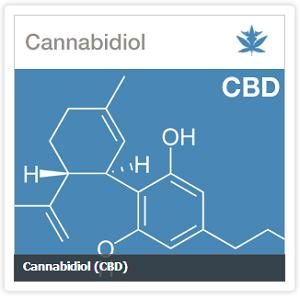People with multiple sclerosis and other diseases that cause severe muscle spasms, spasticity and tremors have used cannabis for a very long time, and have consistently reported that it relieves their symptoms. In what is perhaps the earliest medical report on the use of cannabis to treat muscle spasms, Dr. William O’Shaughnessy, a British physician working in India, reported in 1842 that cannabis extracts effectively controlled the spasticity he observed in cases of tetanus, and in 1890, Dr. J.R. Reynolds reported in The Lancet that alcohol extracts of cannabis were effective in controlling painful muscle spasms. Little more was published until an informal 1974 survey of 10 patients with spinal cord injuries and muscle spasms reported that more than half of them experienced decreased muscle spasticity using marijuana. This was followed in 1980 by a case report on two patients with nocturnal muscle spasms, one of whom had MS, that experienced relief within 5 minutes of smoking marijuana. Abstaining from marijuana led to recurrent spasms that were again rapidly relieved by marijuana.
Over the next several years, a number of other case reports and small clinical trials confirmed these initial observations, but it was not until the ’90s that trials with larger numbers of patients were conducted. A survey of 53 MS patients in Britain and 59 MS patients in the U.S. conducted by Dr. Paul Consroe and colleagues at the Department of Pharmacology and Toxicology at the University of Arizona revealed that more than 70 percent people with MS reported improvement in muscle spasms, spasticity and tremors with marijuana. Patients also reported that it was helpful in improving bowel and bladder problems, difficulty walking and loss of appetites and weight loss.
A similar survey conducted in 2002 by Dr. M. S. Chong at King’s College Hospital in London in the UK showed that nearly half of all MS patients were regularly using marijuana to control their muscle spasms, and that 76 percent of British patients would use it if it were legally available.
More recently, GW Pharmaceuticals, a UK-based company, reported that clinical trials of its cannabis extract called Sativex involving 572 and 241 patients respectively showed significant reductions in muscle spasms when compared with placebo. Sativex, which is administered as an oral spray, was approved by Health Canada in 2005 for use in treating neuropathic pain associated with MS, and has been used on a limited prescription basis in the UK and Spain for treating muscle spasms and pain associated with MS, with applications now under review for full prescription use in those countries and throughout the European Union.
Of greater importance is a finding reported in the journal Brain in 2003 that a synthetic cannabinoid provided “significant neuroprotection” in an animal model of multiple sclerosis. Dr. Gareth Pryce and a team of investigators at the Institute of Neurology at University College in London reported that “The results of this study are important because they suggest that in addition to symptom management . . . cannabis may also slow the neurodegenerative processes that ultimately lead to chronic disability in multiple sclerosis and probably other diseases.”
To test the findings of the 2003 animal study in humans, a 12-month study was conducted at the Peninsula Medical School in Plymouth, England. The results, published in the Journal of Neurology, Neurosurgery and Psychiatry in 2005, indicated that cannabis extracts may indeed slow the progression of MS, prompting a large-scale, 3-year study involving nearly 500 MS patients that is now underway at the same medical school. Results are not expected until the study ends in 2012, but if they verify the earlier findings, it would be a major advance in the treatment of MS.
Cannabis has also been shown to be effective in relieving muscle spasms and spasticity associated with a number of other illnesses such as irritable bowel syndrome, premenstrual dysphoric disorder (PMDD) and PMS, cerebral palsy, Parkinson’s Disease, amyotrophic lateral sclerosis (Lou Gehrig’s disease), spinal cord injury and other nerve injuries, and may also relieve the bronchial spasms that cause asthma, though little formal research has been done on cannabis in any of these conditions.
Unfortunately, it is unlikely that such research will ever be done, at least not in the United States, because the official position of the DEA is that marijuana has no medical benefit, and the National Institute on Drug Abuse (NIDA), which funds 85 percent of the world’s research into substances like marijuana, has publicly stated that it generally does not fund studies that might show medical benefit to marijuana. If you think those positions might be misguided, contact your elected representatives in the U.S. House and Senate and urge them to support research into cannabis and its medical effects.
Alan Shackelford, M.D., graduated from the University of Heidelberg School of Medicine and trained at major teaching hospitals of Harvard Medical School in internal medicine, nutritional medicine and hyperalimentation and behavioral medicine. He is principle physician for Intermedical Consulting, LLC and Amarimed of Colorado, LLC and can be contacted at Amarimed.com.
Article from Culture Magazine and republished with special permission








